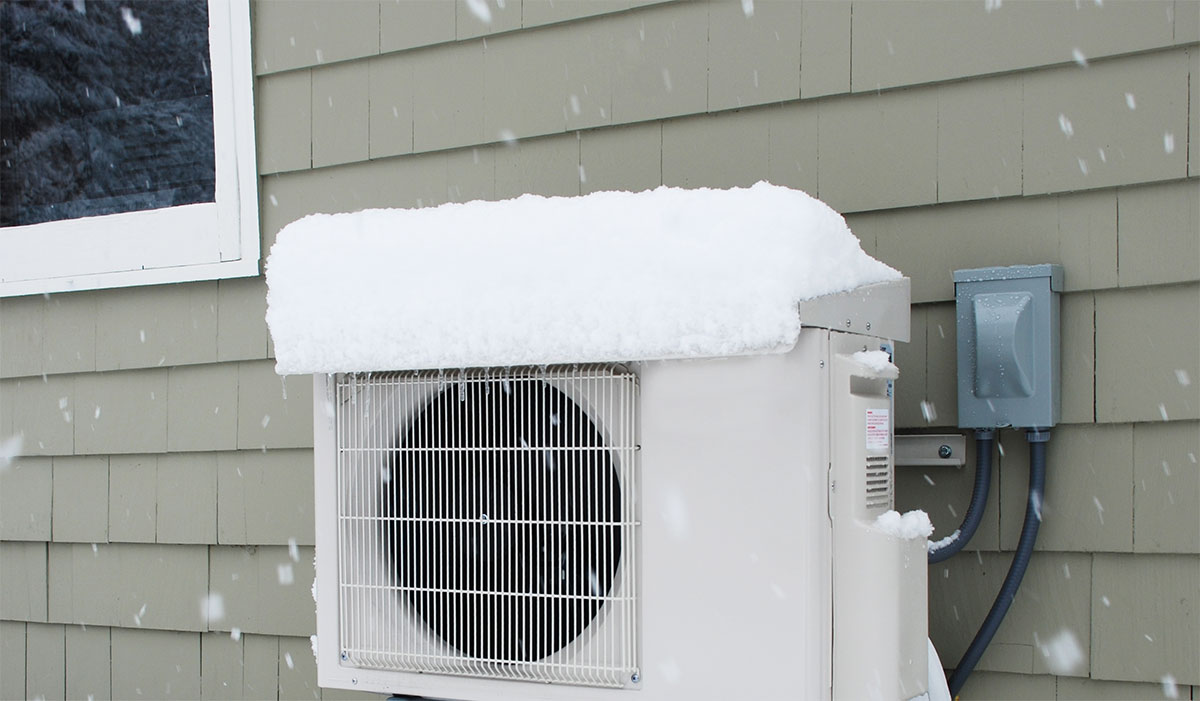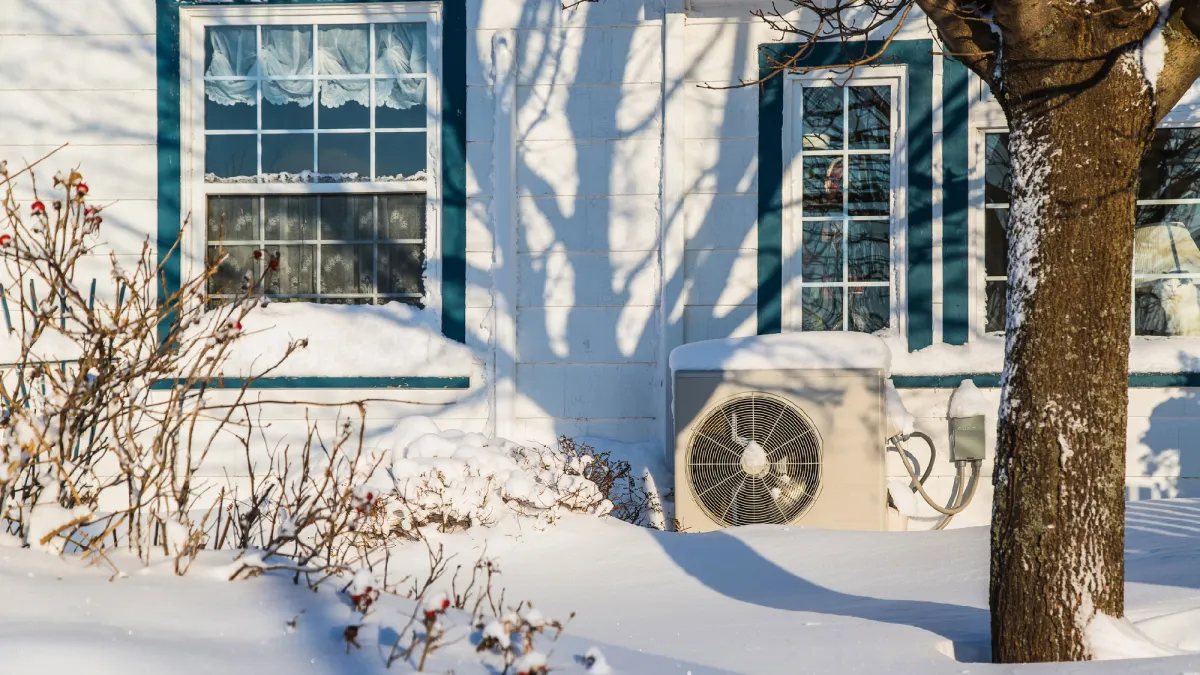This informative blog post answers whether heat pumps work in cold weather.
It tackles the common myth that heat pumps struggle to efficiently heat homes in freezing temperatures.
Do Heat Pumps Work in Cold Weather?
Yes, heat pumps are designed to work efficiently even in cold winter weather.
Cold climate heat pumps can maintain full heating capacity down to 5°F (-15°C) and operate effectively at temperatures as low as -13°F (-25°C).
With advanced technology, heat pumps extract heat from the air or ground even on frigid days.
Key Points
- Cold climate heat pumps can heat homes efficiently even at -13°F (-25°C).
- Heat pumps are up to 3 times more efficient than conventional furnaces.
- Proper installation and maintenance ensure good performance in cold.
Our Opinion
In my experience as an HVAC professional, modern heat pumps are extremely capable heating systems, even in cold climates.
With recent technological advances, cold climate heat pumps maintain impressive heating capacity and efficiency down to temperatures below -10°F.
I recommend heat pumps to homeowners concerned about energy costs and comfort during winter.
Heat pumps are the most efficient heating option available today.
How Do Heat Pumps Work in Cold Weather?
Many people assume that heat pumps lose efficiency and struggle to extract heat when outdoor temperatures drop. But new cold-climate heat pumps are engineered to provide reliable heating down to 5°F or below.
Here’s how they work:
- Heat pumps don’t generate heat – they simply move it, extracting warmth from the air or ground outside and pumping it indoors.
- Even in winter, heat pumps can extract enough heat from the outdoor air or groundwater to warm your home. Advanced components allow heat pumps to operate even when temperatures approach freezing.
- Refrigerant circulates through coils outside to absorb heat, then indoors where it releases warmth. Variable-speed compressors adjust to maximize efficiency as conditions change.
- Cold-climate heat pumps have larger heat exchangers, backup electric resistance heat, and other features to optimize performance in frigid weather.
The bottom line is that modern heat pumps can provide cosy, energy-efficient heating even when temperatures plummet. With a properly sized and installed cold-climate heat pump, you can stay warm all winter long while saving on energy costs.
Heat Pump Efficiency in Cold Climates
While heat pumps are capable of heating your home in freezing weather, their efficiency indeed declines as temperatures drop.
Here are ways to maximize performance:
- Get a cold climate heat pump designed to operate efficiently at lower temperatures.
- Proper sizing and installation are crucial – an oversized unit will cycle on and off, losing efficiency.
- Keep the outdoor unit clear – snow and ice buildup can reduce performance. Consider a weather cover.
- Seal air leaks and insulate your home to reduce heat loss and demand on the system.
- Use a programmable thermostat to optimize run times for efficiency.
- Perform annual maintenance like cleaning coils and replacing filters to keep it running smoothly.
Even though heat pumps lose some efficiency in frigid weather, they can still heat homes effectively and provide big savings compared to electric resistance or gas heating. With smart operation and maintenance, you can get the most out of your heat pump all winter long.
Limitations of Heat Pumps in Winter
While heat pumps are very effective at heating homes in cold climates, it’s important to understand their limitations during frigid winter weather.
As outside temperatures drop below freezing, a heat pump’s efficiency begins to decline. This is because there is less heat energy available in the outdoor air for the heat pump to absorb and move indoors. The colder it is outside, the harder the heat pump has to work to extract heat.
Below about 35°F, most heat pumps reach a point where their efficiency is reduced so much that they can no longer meet a home’s heating needs on their own. This is why many heat pump systems are designed with a supplemental electric resistance heating system as a backup for extremely cold weather.
The backup heat will switch on automatically when needed to maintain a comfortable indoor temperature. However, electric resistance heating is expensive to operate. So, homeowners with heat pumps should take steps like weatherization and proper maintenance to minimize reliance on backup heat.
Understanding these limitations allows homeowners to operate their heat pump systems efficiently and cost-effectively throughout the winter.
Improving Heat Pump Performance in Cold Weather
While heat pumps become less efficient as temperatures drop, there are ways to maximize their performance during cold weather:
- Have your heat pump serviced before winter to ensure it’s in optimal condition.
- Install a larger heat pump designed for colder climates, if needed.
- Seal air leaks and insulate your home to reduce heat loss.
- Keep the heat pump fan running to circulate air and prevent cold spots.
- Install thermostatic radiator valves to balance heating in different rooms.
- Keep snow and debris cleared away from the outdoor heat pump unit.
- Consider installing solar panels to supplement electricity needs.
Taking these steps allows a heat pump system to work efficiently for longer periods before requiring backup heat. Proper maintenance and operation ensure you get the most out of your heat pump, even when temperatures plummet.
Are Heat Pumps a Good Option for Cold Climates?
Heat pumps can be an excellent heating and cooling solution even in cold climates, with proper system design and realistic expectations about performance.
The key factors to consider are:
- Choose a cold climate heat pump designed to operate at lower temperatures.
- Size the system to match your climate and heating needs.
- Include backup electric resistance heat for extreme cold periods.
- Insulate and air seal your home to reduce heat loss.
- Understand performance will decline as temperature drops but is still more efficient than resistance heating.
With the right cold climate heat pump model and a properly insulated home, you can achieve significant energy savings compared to conventional heating systems in cold regions. Maintenance is crucial for optimizing seasonal efficiency and preventing costly repairs. While not a perfect solution for all cold weather scenarios, heat pumps are a viable and energy-efficient option for many homes if the system is designed and operated appropriately.
FAQ
How cold is too cold for a heat pump?
Modern heat pumps can operate efficiently in temperatures as low as -13°F (-25°C) or below. However, efficiency may start to decline below 5°F (-15°C).
Can it be too cold for the heat pump to work?
No, it cannot be too cold for a properly installed cold-climate heat pump to work. They are designed to extract heat even in very cold conditions down to -13°F (-25°C) or lower.
At what temperature is a heat pump useless?
Heat pumps are not useless at any outdoor temperature. High-efficiency cold climate models can effectively heat homes even when it’s -13°F (-25°C) outside. Older heat pumps may lose capacity below 5°F (-15°C).
What is the major disadvantage of a heat pump system?
The major disadvantage of a heat pump is reduced heating capacity and efficiency at very cold outdoor temperatures below 5°F (-15°C). However, cold climate heat pumps are engineered to maintain heating output down to -13°F (-25°C).
Conclusion
In summary, modern heat pumps are capable of providing efficient heating even in cold winter weather. Research shows heat pumps can be up to three times more efficient than conventional furnaces. While air source heat pumps may lose some performance at very low temperatures, cold climate models heat homes effectively even when it’s -13°F (-25°C) outside. With proper installation and maintenance, heat pumps do work well in cold weather.


